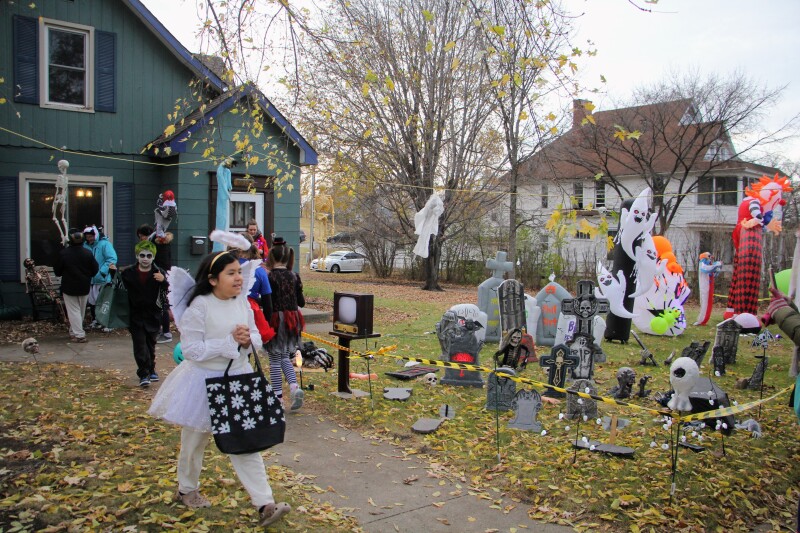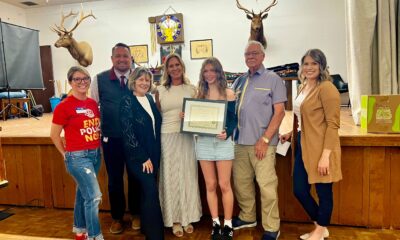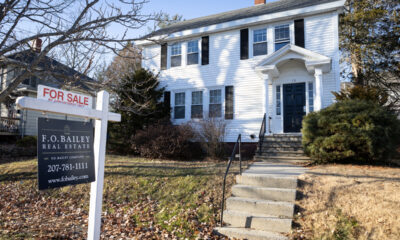Politics
Embracing Halloween: The Case for Neighborhood Trick-or-Treating

Halloween has evolved into a dual tradition, featuring both traditional trick-or-treating and modern Trunk-or-Treat events. While both practices offer enjoyment, only one serves a critical civic role: fostering essential social connections in our communities. This article explores the importance of maintaining traditional neighborhood trick-or-treating, particularly on October 31, as a means of enhancing community cohesion.
Understanding the Shift: Trunk-or-Treat Versus Trick-or-Treat
Trunk-or-Treat events, where families gather in parking lots to collect candy from decorated vehicles, provide safe and inclusive spaces, especially in rural areas where homes are far apart. These gatherings create opportunities for businesses, churches, and civic organizations to connect with families and promote their services. However, when Trunk-or-Treats replace traditional neighborhood activities within city limits, communities lose an invaluable opportunity for connection.
The essence of trick-or-treating extends beyond candy collection; it represents a community ritual that encourages residents to step out of their homes. This annual event fosters casual interactions among neighbors, breaking down barriers and building trust. As residents walk from door to door, they humanize their neighbors, dispelling unfounded fears about community safety.
Small exchanges during trick-or-treating contribute to a resilient community. The informal connections made on Halloween evening establish a sense of shared responsibility and vigilance, known as the “eyes on the street.” This phenomenon not only enhances neighborhood security but also reinforces social bonds that last well beyond the holiday.
The Importance of October 31
Trunk-or-Treat events often take place on weekends or alternate days for convenience, but the true magic of Halloween lies in its celebration on October 31. When community organizations or municipalities manipulate the timing of festivities, it fragments the collective experience intended to unify neighborhoods. The tradition thrives when communities agree that Halloween night is reserved for neighborhood celebrations, typically occurring after dusk.
To address modern safety concerns while preserving neighborhood traditions, a “both/and” approach is essential. For communities worried about darkness or access, implementing a Sidewalk Table model can be effective. Neighbors can set up decorated tables on their lawns or sidewalks to distribute candy, enhancing visibility and positioning adults side by side. This arrangement creates a welcoming opportunity for socializing while children enjoy the festivities, further strengthening community ties.
The most memorable Halloween celebrations are not necessarily those that prioritize speed or safety but rather those that foster genuine connections. While Trunk-or-Treat events offer advantages for families in rural settings, they should serve as a supplement to, rather than a replacement for, traditional neighborhood activities on October 31.
Ultimately, Halloween remains one of the few traditions that encourages individuals to open their doors and hearts to their neighbors. As we approach this year’s festivities, it is crucial to reaffirm that the real essence of Halloween occurs on the sidewalks, where children create lasting memories and neighbors build a stronger community.
Aaron Wittnebel, a consumer representative on the state’s Council on Mental Health and a member of the Early Intensive Developmental and Behavioral Intervention Advisory Council, advocates for the preservation of traditional Halloween celebrations. He resides in rural Becker County.
-

 Science2 weeks ago
Science2 weeks agoResearchers Challenge 200-Year-Old Physics Principle with Atomic Engines
-

 Politics2 weeks ago
Politics2 weeks agoNHP Foundation Secures Land for 158 Affordable Apartments in Denver
-

 World3 days ago
World3 days agoBoeing’s Aircraft Production: Assessing Numbers and Challenges
-

 Lifestyle3 days ago
Lifestyle3 days agoRed Bluff High School’s Elli Nolan Named Rotary Student of the Month
-

 Health2 weeks ago
Health2 weeks agoNeuroscientist Advocates for Flag Football Until Age 14
-

 Lifestyle2 weeks ago
Lifestyle2 weeks agoLongtime Friends Face Heartbreak After Loss and Isolation
-

 Science3 days ago
Science3 days agoAI Misidentifies Doritos Bag as Gun, Triggers Police Response
-

 Business2 weeks ago
Business2 weeks agoSpirit Airlines Cuts Workforce with Furloughs for 365 Pilots
-

 World2 weeks ago
World2 weeks agoGlobal Military Spending: Air Forces Ranked by Budget and Capability
-

 Top Stories4 days ago
Top Stories4 days agoUrgent Search for Suspect Who Exposed Himself to Teen Girl
-

 Business2 weeks ago
Business2 weeks agoMaine Housing Inventory Surges to Post-Pandemic High
-

 Politics2 weeks ago
Politics2 weeks agoIsraeli Air Strikes in Lebanon Kill One, Wound Seven Amid Tensions









